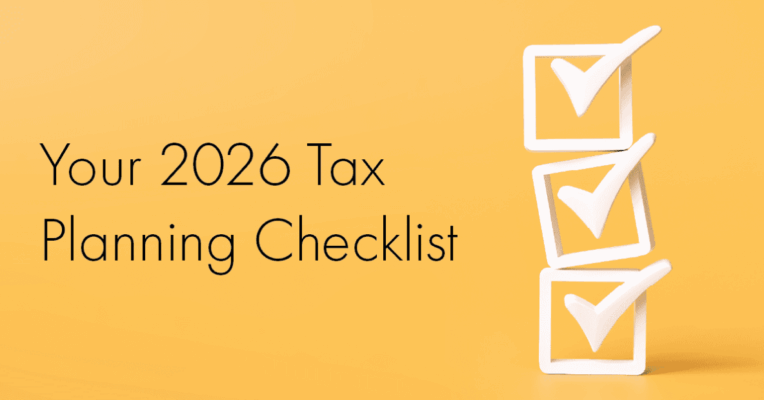Rollover Equity Isn’t Just an Investment—It’s a Bet
When a buyout is on the table, it’s easy to focus on the headline number. However, for many business owners, founders, and senior leaders, the next more meaningful decision is whether to roll over a portion of their equity into the new company.
Choosing to roll over equity often signals your confidence and commitment to the company’s future growth. And it can be. But if you’ve already created meaningful wealth, built a strong foundation, and are looking ahead to your next chapter, this decision becomes less about potential upside and more about alignment.
Rollover equity is a bet on the company, on the buyer, and on your ability to wait. Before you make that bet, it’s worth slowing down to ask what you’re solving for.
Lead with strategy, not sentiment
Letting go of something you’ve built or led is never purely a financial decision. The emotional ties are real and deserved. But the decision to roll over equity isn’t a gesture of appreciation; it’s an investment.
That’s why it helps to step outside the narrative and ask: If I didn’t already own this business, would I invest this amount of money in it today under these terms? If the answer feels murky or hesitant, it may be a sign that emotion is guiding the decision more than strategy.
There’s nothing wrong with loyalty, but this moment calls for clarity. The best way to honor what you’ve built may be to make a decision that supports where you’re going, not just where you’ve been.
Beware of concentration risk
One of the quiet risks in rolling over equity is the amount of exposure you’re retaining. While “just 20% of your payout” may seem low risk, it can still be a significant portion of your wealth if illiquid investments, such as real estate or private holdings, make up the majority of your assets.
If you’ve reached a point in your life where diversification, stability, or flexibility matters more than another big swing, then this becomes a question of balance. How much risk do you want to carry forward into this next chapter? And is this the company you want to take that risk with?
It’s not about walking away from opportunity—it’s about right-sizing the role this investment plays in your broader financial life.
Match liquidity to the life you want
There’s often a gap between what we can afford to invest and what we truly need to access. A buyout may be your moment to free up capital for rest, reinvention, family, or philanthropy. But a sizable rollover can delay those plans, sometimes indefinitely.
So it helps to ask: What do I want my life to look like in the next 12 to 36 months? What would I do if I had greater liquidity? Suppose the answer includes travel, giving, launching a new project, or simply taking a break. In that case, it’s worth considering whether tying up capital in a second exit supports or restricts that vision.
This isn’t about playing it safe. It’s about choosing financial flexibility on your terms.
Get ahead of the tax complexity
A rollover may seem like a simple exchange—less cash now, more equity later—but the tax implications can be significant and often unexpected. The type of entity you hold (C-corp, S-corp, LLC, U.S. or foreign) may shape how gains are recognized, and not all states follow federal deferral rules uniformly.
Depending on how the deal is structured — whether it’s a Section 351 exchange, a Section 721 partnership contribution, a Section 368 reorganization, or a non-qualified rollover (which is fully taxable)—you may trigger capital gains, forgo QSBS exemptions, or miss the window to implement advanced planning tools like GRATs or charitable giving strategies.
And with the passage of the One Big Beautiful Bill Act (OBBBA), the rules around QSBS just got more nuanced. If you’re holding Qualified Small Business Stock acquired after the law’s effective date, the required holding period to receive the full capital gains exclusion has decreased from five years to three. Stock acquired prior to that date still requires a five-year holding period.
The thresholds for qualification have changed, too. Companies can now qualify for QSBS treatment with up to $75 million in gross assets (up from $50 million), with an automatic inflation adjustment going forward. And the lifetime cap on tax-free gains has increased from $10 million to $15 million for post-OBBBA acquisitions — while the alternative cap of ten times your investment basis remains unchanged.
These updates may create new opportunities, but they also introduce more complexity. Valuation disputes can further muddy the waters. If there’s a disagreement over the fair market value, your capital gains exposure might be larger than expected. And in deals with complex capital structures — preferred shares, waterfalls, or earnouts — each layer can introduce its own set of complications.
These are decisions that can’t be unwound once the ink is dry. But with a few months’ foresight, you can shift from reacting to proactively shaping outcomes.
The key is to see taxes not as a cost, but as a lever for change. With the proper planning, this transaction may be a catalyst for building your legacy, advancing your giving, and strengthening your family’s future. Those opportunities exist — but only if you make space for them before the deal closes.
Ask what you’re getting in return
Rolling over equity means staying invested—but it often also means giving up control. As a minority shareholder, you may no longer have access to the decision-making table, or even to basic reporting about company performance.
Before agreeing to a rollover, it’s worth asking: What visibility will I have after the deal closes? Will I retain a board or observer seat? Will I get regular updates? And if the company changes course, what rights do I have to push back—or get out?
This isn’t about micromanaging the future. It’s about ensuring that a meaningful investment of your wealth doesn’t leave you in the dark.
Understand the exit timeline
A second bite at the apple only matters if you can take it—and when. Many buyers discuss a 3–5 year horizon, but timelines often stretch. Markets shift. Priorities change.
That’s why it’s essential to look at the second exit not as a promise, but as a variable. Ask yourself: If the exit takes twice as long, or the outcome is half as big, does that still work for me? What happens to the rest of my plans if this capital stays tied up longer than expected?
You don’t need to plan for the worst. But you do need to be honest about how much flexibility you’re giving up.
Make sure it serves your bigger picture
This decision isn’t about whether you believe in the business; it’s about whether you believe in yourself. It’s about whether staying tied to it serves your life now.
So ask yourself: What am I holding onto? And what might I be giving up in return?
You’ve earned the right to make a decision that’s not just smart, but meaningful.
Be intentional with what you’ve earned
Rollover equity might offer a future payoff. But it comes with tradeoffs—some financial, some personal. This isn’t just about numbers. It’s about clarity. Timing. And choosing how you want to live from here forward.
You don’t need to answer all of these questions today. But you do need to ask them. Thoughtful decision-making can help align your financial choices with the life you’ve built.
This content is for informational and educational purposes only and should not be construed as individualized advice or a recommendation for any specific product, strategy, or course of action. Brighton Jones, its affiliates, and employees do not provide personalized investment, financial, tax, or legal advice through this communication. This material is not intended to, and does not, create a fiduciary relationship under ERISA or any other applicable law. For individualized advice tailored to your specific circumstances, please consult with your adviser.





